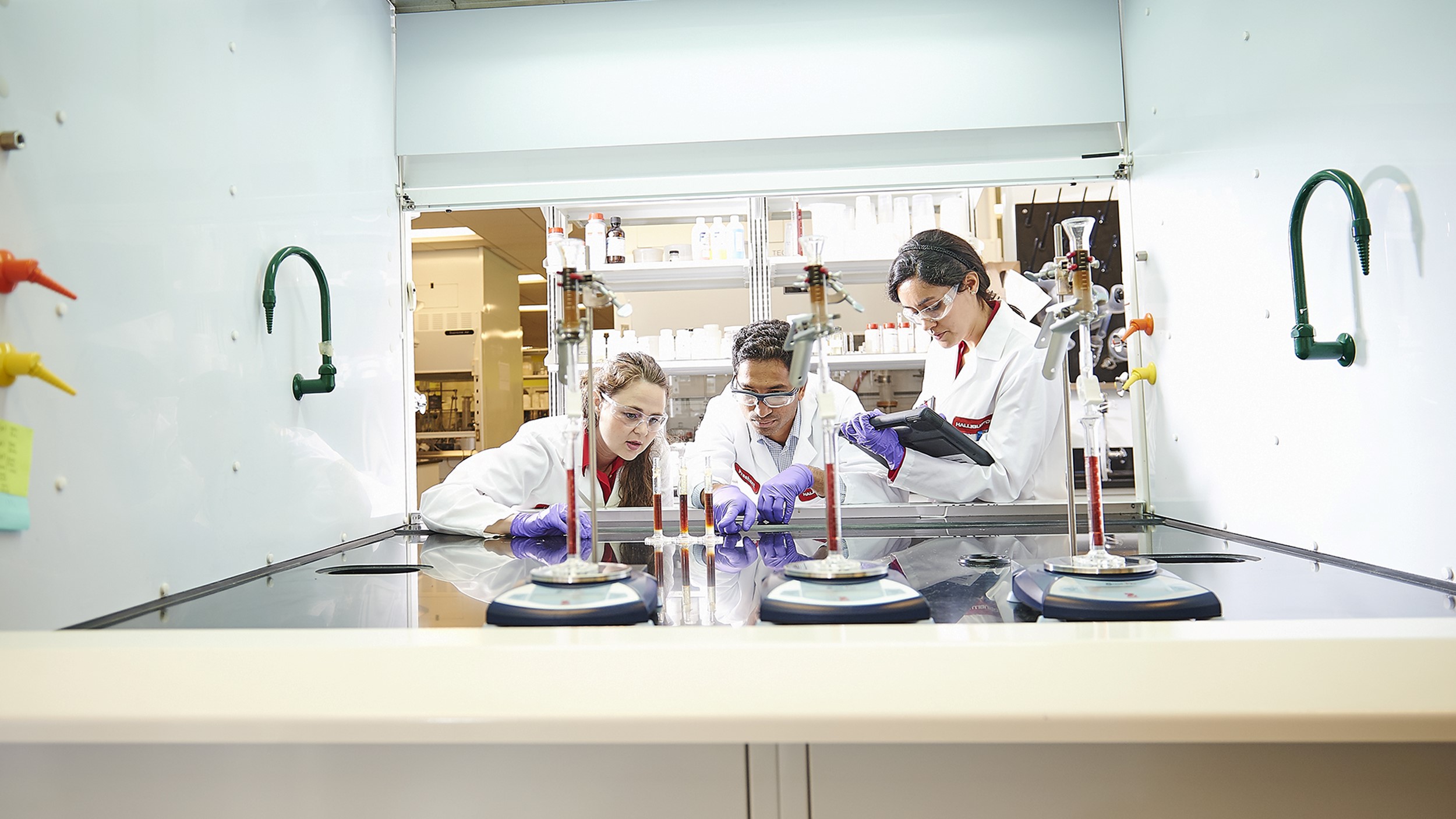 Search
Search
 Search
Search

Fracture face stimulation chemicals reduce formation damage.
Download PDFProducing wells with abnormally high decline rates

Midland Basin, Texas

A major operator in the Permian Basin used Halliburton’s RockPerm clay control service on a multi-well field trial in an effort to decrease the decline rates and improve overall well production. Through the RockPerm clay control service, chemicals for fracture face stabilization were identified and fluid design recommendations were generated to minimize fracture face failure. Wells treated with the RockPerm clay control service recommendations realized improved initial production rates up to 118 percent.
On the new property, the operator noticed abnormally high production decline rates on four existing wells. All four vertical wells were completed in the Spraberry and Wolfcamp formations. Treatment designs for the wells were based on common practice in the area. The challenge to Halliburton was to identify the reason the wells were underperforming and to recommend new designs.
Production data, previous designs, and available log data revealed a potentially unstable formation type. If not treated properly, this type of formation can experience fracture face instability, resulting in deterioration of the fracture over time and, ultimately, reduced production. In order to know more, formation rock and fluid samples were required.
Treatment fluid contacting and leaking into the reservoir fracture face should have optimized chemistry to control these effects and help preserve inflow capacity at the interface. Using the cores obtained, RockPerm clay control testing was performed and the protocol included a swelling stability test (SST) to measure the swellability of the formation material. Additionally, a newly developed mechanical stability test (MST) can be correlated to the hardness changes of the sample.
Quad-cell testing was also performed to better understand the mechanism of fracture face failure. Utilizing a quad-cell press, formation wafers and slurried proppant are tested under closure stress to be examined for evidence of proppant embedment and crushing. This testing, combined with the RockPerm analysis, was used to determine the top-performing products from the Halliburton suite of unconventionals-focused clay control technologies. The results from the quad-cell testing also indicated that running higher concentrations of higher strength proppants in the treatment would result in better well performance. This allowed for further customization of the stimulation treatment.
The four wells treated based on the RockPerm and quad-cell testing analysis performed significantly better than the four offset wells treated with comparable but non-customized treatments. Initial production rates improved by up to 118 percent. The initial decline rate was decreased as compared to the offsets by up to 21 percent. These improved production rates were sustained over time. A final added benefit: cost per barrel of oil equivalent (BOE) was decreased by 36 percent. All in all, a huge win for the operator.
Advanced Fracture Monitoring
Our swelling and mechanical stability tests determine which additives best prevent clay-associated formation damage caused by clay fracture face destabilization.
Discover RockPerm